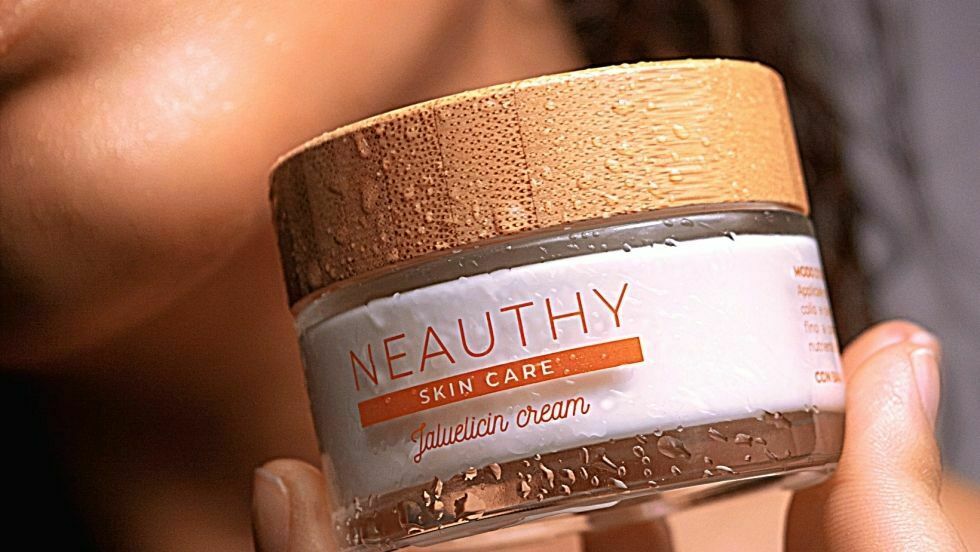Kaolin clay (also known as China clay) is one of the softest clay types used in various skincare products. “Kaolin” actually comes from the Chinese word “Kaoling,” which refers explicitly to the name of a hill in China where this mineral was first discovered and mined. In China, kaolin is typically used for creating porcelain goods and diarrheal medicine. Both pure or processed kaolin has a soft, white texture and is rich in kaolinite. Note that the mineral content within the clay usually determines raw kaolin’s color. Thus, sometimes it may appear pink, blue-ish, or green. Regardless of the content, kaolin (washed) always has neutral pH, making it one of the healthiest and softest minerals for skin treatment.
Washed Kaolin
Washed kaolin refers to a fully processed kaolin clay in which the raw material was crushed and centrifuged to disperse any impurities. In addition, the hydrocycloning method is also quite common to achieve a similar result.
Chemical bleaching is then carried out to improve the color and the texture of the kaolin before it is molded or altered to fulfill any specific purposes. Washed Kaolin has an overall shape and is easy to dissolve in water or any fluid mixture.
Using Washed Kaolin Properties for Cosmetics

Processed kaolin can effectively clean your skin from dirt, pollution, and bacteria. The clay won’t clog your pores and cause acne. In addition, it can superbly remove dead skin cells without causing redness and irritation. In the shorter term, it is an excellent beautification material to put into any cosmetics.
Experts agreed that kaolin-based clay is great to brighten and even out your skin tone by stimulating the cells if used regularly. Note that the apparent results are not instant. It would be best if you did a long-term treatment to see the real effects on your skin.
Moreover, here are some benefits of the washed kaolin for your skin:
1. Binds Sebum
Sebum is the natural oil produced by human skin. It consists of various components, including fatty acids, triglycerides, wax esters, squalene, and cholesterol. This crude oil plays an essential role in maintaining skin moisture and preventing the growth of bacteria on the skin.
Unfortunately, some people have the tendency to produce excessive sebum. This condition is indicated by large pores, thicker and shinier skin, and dull tones. Typically, people with oily skin are advised to use facial skincare products that contain tretinoin, glycolic acid, or salicylic acid. Products that contain these ingredients help remove excess oil, shrink pores, and reduce acne breakouts.
Kaolin naturally binds sebum, absorbing excess sebum on the skin’s surface while keeping it moisturized. Thus, its properties are suitable for people with excessive sebum production.
2. Controlling Excessive Oil in T-Zone Area
Did you know that the oil on a human’s face is not essential? It is called sebum, which is a substance with a similar consistency to oil or wax. Sebaceous glands produce this fluid in the skin.
“T-Zone area” is one of the oiliest parts in your face since sebum production is prominent in those areas. Luckily, kaolin has the necessary properties to remove all excessive oil in the T-Zone. However, note that different kaolin types have additional mineral content, thus limiting its use for people with specific skin conditions.
For instance, red kaolin clay has the most outstanding absorbency, so it is best for treating oily and acne-prone skin. Meanwhile, people with sensitive skin may benefit better by using white kaolin clay since the content is softer on the skin.
3. Exfoliating Dead Skin Cells

Kaolin is widely used as a skincare mineral because of its ability to pull dirt, blackheads, excess oil, and dead cells. It creates an “exfoliating” effect on your skin by peeling the dead skin cells to let the new layer of skin popping into the surface. This process works wonders to increase your blood circulation and skin nutrient intake.
As you may know, regular exfoliation increases collagen production. The optimal collagen production contributes to better facial elasticity, which makes your skin look firmer and more supple and minimizes the appearance of fine lines and wrinkles on your face.
Furthermore, exfoliating skin is beneficial to ‘fight’ the signs of aging. Generally, your skin’s natural ability to reconstruct or regenerate the cells will start slowing down as you age. The pile of dead skin cells causes the skin to dry out and wrinkle. Thus, exfoliating your skin helps to reduce these effects.
4. Brighten the Skin

Kaolin is used as one of the most prominent minerals in various products, aiming to brighten the skin. This mineral is usually used as an alternative to bentonite clay that tends to be too “strong” in detoxifying the skin.
The clay detoxes more gently and is suitable for sensitive skin. Washed kaolin also tends to be milder, even though it has more or less the same benefits as Bentonite. Additionally, kaolin clay masks contain anti acne treatment properties, which is good for acne-prone skin and people with easy-to-dry skin.
5. Correcting Skin Tone
Correcting the uneven skin tone cannot be carried out in an instant. The process takes time and patience to achieve optimal results. Luckily, skin tone treatment using kaolin clay is relatively straightforward. You need to apply the clay all over your face and leave it on for about 15 minutes. After that, rinse your face with clean water thoroughly.
You can apply a kaolin mask both during the day or night time. However, note that excessive usage of kaolin-based products is counterproductive since it may dry out your skin. You can also use another clay-based face mask for the best result, including the bentonite earth clay mask. This combination is adequate to absorb dirt in your pores.
Final Words
Based on these facts above, we can conclude that washed kaolin is an excellent mineral to put in many cosmetics products, especially face masks and facial treatment goods. Knowing that the skincare business has increased for the last decade, the rising demand for kaolin is expected to increase in the next few years.
Related: Think You Know How Much is Kaolin Worth in Global Market?


Recent Comments